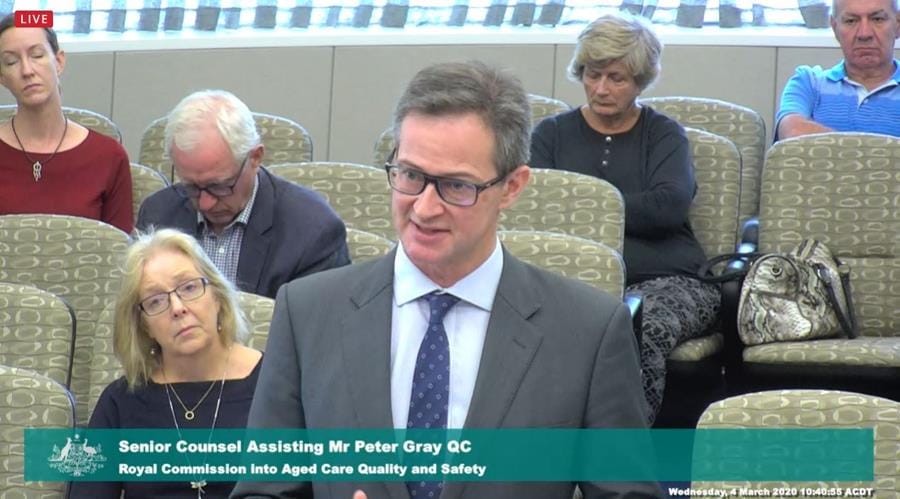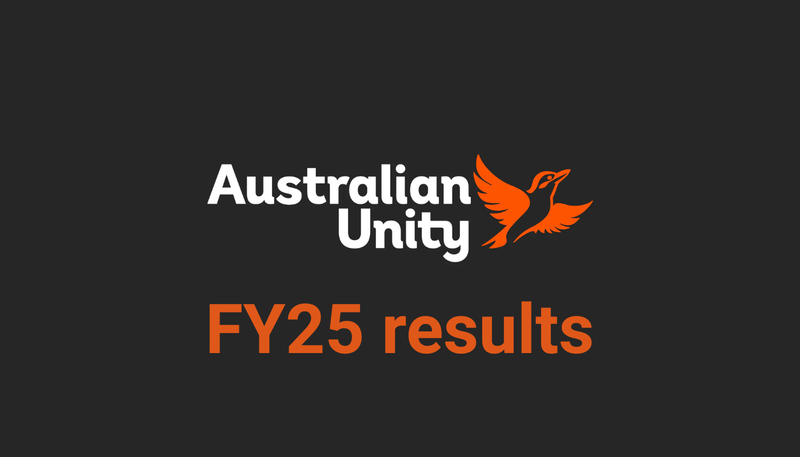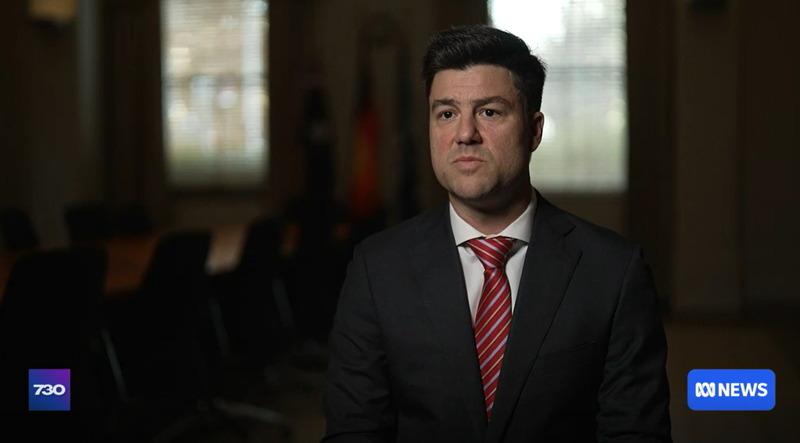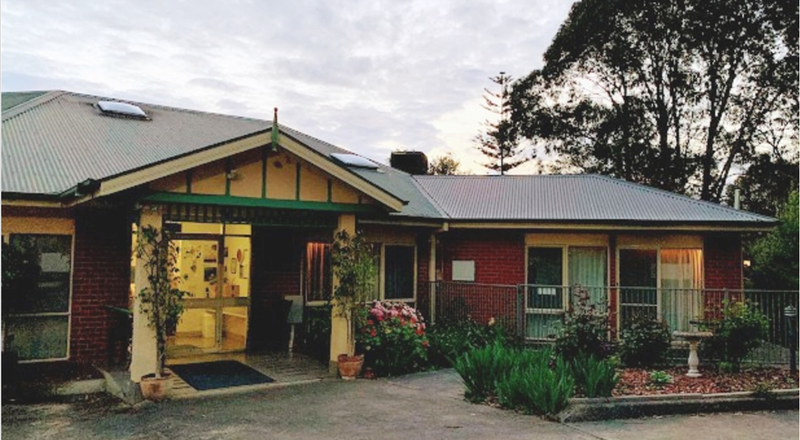Obstacles and opportunities: Counsel Assisting’s proposals for aged care redesign point to greater accountability – and incentives – for providers
You can find more details on making a submission here

The Counsel Assisting’s written submissions from Wednesday’s hearing have thrown up a series of proposals to “overhaul” the current aged care system, but what will they mean for providers if they are implemented?
Here are the main takeaways from the 75-page submission:
Workforce will be key – and expensive:
Uncapping supply on aged care beds and home care packages and providing immediate access to home supports will require a big increase in the aged care workforce to meet demand. This will extend from nurses and carers through to allied health professionals and other clinicians who will be needed to provide the focus on reablement also put forward by Senior Counsel Assisting Peter Gray QC (pictured above). The result: a big hit to providers’ wage bills. There will be no avoiding these staffing costs either – under the Counsel Assisting’s previous recommendations on workforce, funding will be tied to meeting minimum staffing levels.
Providers must meet resident’s clinical care needs – plus provide ‘quality of life’:
The submissions state that residential care providers will receive all the funding allocated to a care recipient – and have the flexibility to pool that funding if required, apart from the new funding for social supports such as transport and social activities which would be funded separately. But this would come with a condition – providers would be responsible for making sure all a person’s assessed needs are met – including ‘quality of life’. How will this be measured – and what happens if this indicator is deemed unmet?
More red tape and more accountability for funding:
Regular financial reporting of expenditure on residents would be required under the proposals. Providers would be reimbursed if spending went under a person’s budget – but would also need to pay back the money if they go over the allocated amount.
“Where a provider spends more on care in a payment period than paid to it in that period, it should be able to seek a reassessment of care needs of any residents for whom materially greater than assessed care was provided, to determine if the additional expenditure was reasonable and necessary,” the submission states. “If the expenditure was reasonable and necessary in light of the reassessments, the provider should receive an adjustment covering the additional care costs in that period.”
Payroll evidence would also need to be submitted to show mandated staffing levels are being met – adding to the ‘bureaucratic spaghetti’ for providers.
Providers will still be responsible for coordinating and planning care:
Key to the proposed model is the idea of “care finders”, who will give advice on aged care options and provide case management (provided the older person wants it). However, care planning – working out the kinds of personal and clinical care needed daily – will still be the responsibility of providers and staff and likely require greater coordination given the shift towards reablement and wellness.
‘Star ratings’ for facilities:
The Counsel Assisting team wants to improve the information available to the public so older Australians and their families can weigh up their aged care options. That points to the performance ratings proposed by Kate Carnell and Professor Ron Paterson finally being implemented – and would be expanded to cover staffing levels and home support and care services. The Department of Health is already planning to put a star rating system from July 2020 – but the submissions increase the administrative burden with providers needing to regularly supply staffing information across all their services.
Providers will need systems for collecting data:
A constant theme throughout the Royal Commission hearings has been the Government’s lack of data around aged care demand and usage. While the submissions say the Government needs to ‘up its game’, providers are also expected to collect data on a range of indicators including health, safety and quality data including medication data, diverse needs, quality of life and GP visits/hospital admissions. This will require an investment in technology and staff to ensure the information is captured and passed up the chain.
Providers that offer home-style accommodation and reablement will benefit:
The big winners from the written submissions will be providers with innovative accommodation models and those that diversify their service offering. While the Senior Counsel stated that residential care will still be part of the system, there will be fewer people in residential facilities and growth in more flexible forms of supported accommodation. Providers already offering reablement and rehabilitative care will be a step ahead of the game.
Consumers will pay more – but how much more?
While funding is not the focus of the submissions, the Counsel Assisting were clear that the system should continue to be primarily funded by the Government with consumer making “substantial contributions”. The written submissions hint at a “logical regime of means tested co-contributions” that should apply – will these consider the family home?
A big bill for the Government:
Despite the suggestion of changes to means testing, the Senior Counsel was firm that reablement and rehabilitative services should not be funded out of an older person’s package or budget but be paid for separately by the Government. Government would also foot the bill for determining the costs of providing care, updating data collection and communication systems at the national levels and connecting the various Departments that deal with ageing.
“These interventions should be available upon assessment on the basis that they represent a justifiable ‘investment’ of public funds, likely to delay or prevent the progression of the person receiving care to require higher levels of more costly ongoing care,” the submission states.
How much will this cost? Stakeholders will have to wait for the funding and financing hearing later this year to learn the final total.
A call for submissions:
Finally, underlying the whole submission is the fact that none of these proposals is set in stone. The Senior Counsel and Commissioner Tony Pagone made it clear that they are open to discussion with the sector on the future direction of the system – and would welcome submissions, particularly around funding (see the list of funding-related questions in yesterday’s issue). But the deadline for submissions on these proposals is 18 March 2020 – just under two weeks away. If you want to have your say on the future of your sector, this is your chance. You can find more details on making a submission here. What do you think of the Counsel Assisting’s proposals? Do you think they are realistic?





